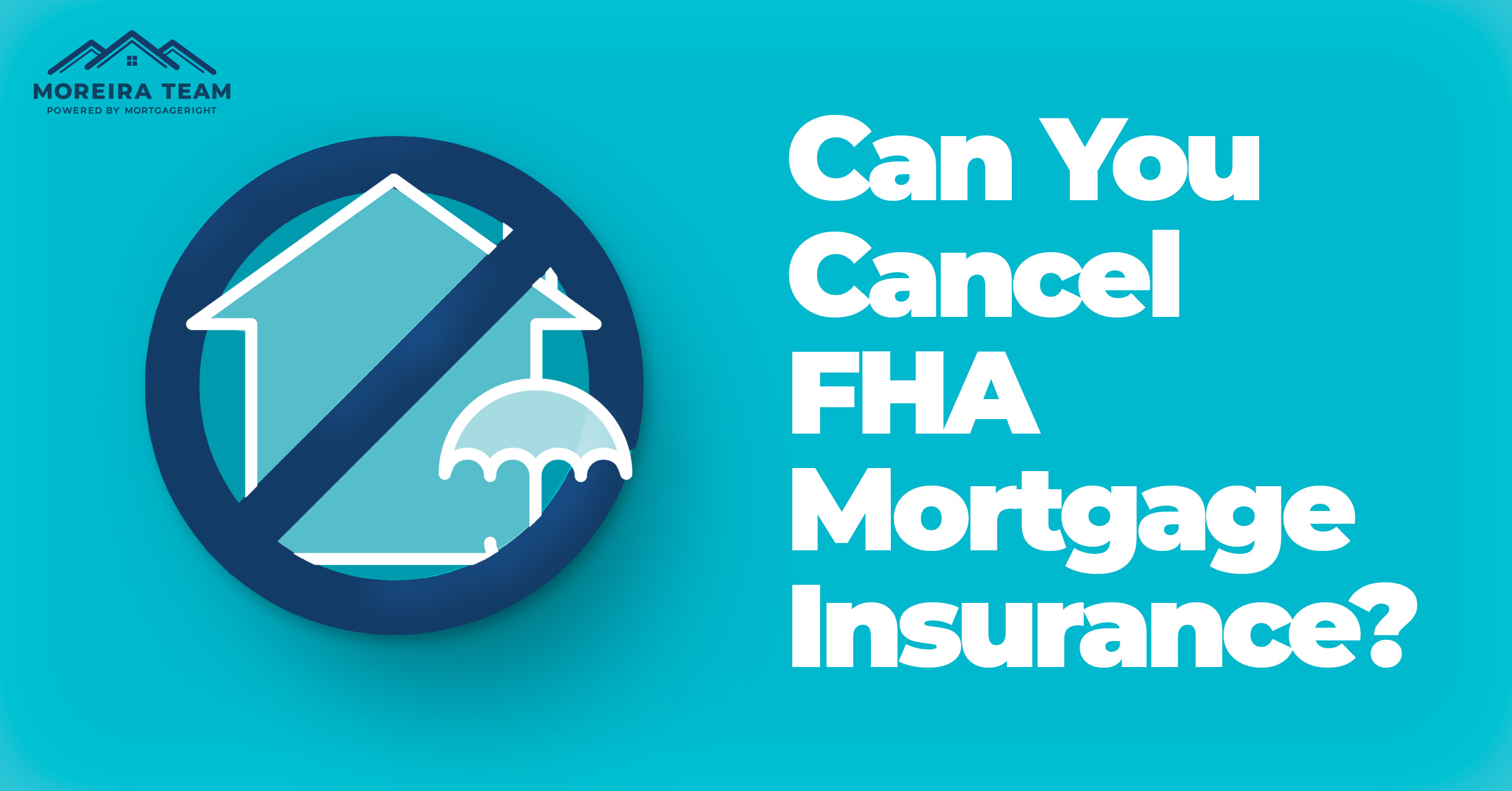
In this article
- Eliminating your FHA MIP: The Key Takeaways
- How Long Does FHA MIP Last?
- How to Remove FHA MIP
- Automatic Removal of FHA Mortgage Insurance
- Refinance to Remove FHA MIP
- How to do an MIP Removal Refinance?
- Is It Possible to Eliminate PMI on an FHA Loan without the Need to Refinance?
- Lower Your FHA Mortgage Insurance Rate
- Current FHA Mortgage Insurance Rates
- How to Remove Conventional Private Mortgage Insurance (PMI)
FHA mortgage insurance premium (MIP) isn’t permanent in spite of what you might have heard. While some homeowners can just let their mortgage insurance fall off, others need to refinance out of it. Refinancing is the option chosen by may now that home values are rising and mortgage rates are near historic lows.
Removing FHA mortgage insurance is an important achievement. You can determine your eligibility for a new PMI-free mortgage through a refinance.

Eliminating your FHA MIP: The Key Takeaways
To eliminate the annual mortgage insurance premium (MIP) on your FHA loan, you can do one of the following:
- Wait for the MIP to Expire: Your FHA MIP will expire after 11 years if you put at least 10 percent down when buying the home.
- Refinance into a Conventional Loan: If you replace the FHA loan with a conventional loan, the FHA’s MIP requirement no longer applies. It is the only available FHA MIP removal option if you put down less than 10 percent.
Fortunately, home values are rising throughout the country, which means that many FHA homeowners have sufficient equity to refinance into a conventional loan and cancel mortgage insurance even those that bought just a few years ago.
How Long Does FHA MIP Last?
FHA loans currently fall into 2 categories: those with case numbers issued prior to June 3, 2013, and applications made on or after that date. Your FHA mortgage insurance removal will be determined by this deadline since that’s when the FHA rules changed.
FHA loans for which you completed an application on or after June 3, 2013:
The MIP schedule is simplified for modern FHA loans. The size of your down payment will determine whether MIP will expire.
How to Remove FHA MIP
Paying FHA mortgage insurance does not have to be permanent. You only require decent credit and sufficient equity to refinance into a conventional loan.
The National Association of Realtors reports that the median home listed for sale in the United States in August 2021 was $356,000, which is 15 percent higher than one year prior. This extra value means that homeowners will soon be able to refinance out of FHA.
When homeowners reach 20 percent equity based on current value, they will be able to refinance into a conventional loan that doesn’t require any mortgage insurance whatsoever.
Automatic Removal of FHA Mortgage Insurance
If you received the FHA loan prior to June 3, 2013, then you were eligible for cancellation of your MIP after 5 years. However, you should have had at least 22 percent equity in the property and must have made all payments on time.
If your FHA loan was issued on or after June 3, 2013, you must refinance into a conventional loan and have a current loan-to-value ratio of 80 percent or lower. The loan-to-value ratio is another way of measuring home equity.
If you owed $160,000 on a home valued at $200,00, your LTV would be 80 percent since the loan balance is 80 percent of the value of the home (i.e., $160,000/ $200,000 = 80). An LTV of 80 percent means that you have 20 percent home equity which should be sufficient to refinance into a conventional loan without PMI.
Refinance to Remove FHA MIP
FHA homeowners today have loans with the following characteristics:
- Opened either on or after June 3, 2013
- 30-year loan
- Original down payment of below 10 percent
Mortgage insurance isn’t automatically cancelled for FHA mortgage loans. You would first have to refinance out of the FHA loan if you want to no longer have to pay mortgage insurance premiums.
Fortunately, there aren’t any restrictions when it comes to refinancing an FHA into a non-PMI conventional loan. Furthermore, FHA loans don’t attract any prepayment penalties, which means that you have the option of refinancing whenever you want.
To do so, you will need to have at least 20 percent equity in the home. To determine what your home equity is, subtract your current mortgage balance from the value of your home. You will also require a credit score of at least 620 before refinancing into a conventional loan with most of the lenders. The higher the credit score, the more you are likely to save on monthly mortgage payments.
How to do an MIP Removal Refinance?
The refinancing process is straightforward. All you have to do is apply with a mortgage lender. Let your loan officer know that you would like to cancel MIP and refinance into a conventional loan. From there, the lender checks your eligibility for a non-PMI conventional loan, which involves:
- A complete review of your credit history and credit score
- A new home appraisal to check the current value of your property
- Verification of your employment and income
Provided that you qualify for conventional financing, your lender will help you through the rest of the application and approval process. Once the refinance closes, the existing FHA loan will be replaced with the new conventional loan and you won’t have to pay mortgage insurance.
As a bonus, you may also get a lower rate of interest via refinancing as long as you have personal finances strong enough to qualify you for a superior rate.
Is It Possible to Eliminate PMI on an FHA Loan without the Need to Refinance?
You can eliminate FHA mortgage insurance without the need for refinancing, but only if you secured the loan prior to June 3, 2013, or put down at least 10 percent when you bought the home.
If you received the FHA loan anywhere from January 2001 to June 3, 2013, the MIP will go away after you have at least 22 percent in home equity.
If you received the FHA loan past June 3, 2013, the MIP will be eliminated after 11 years of payments, but only if you put at least 10 percent down. The coverage lasts until you have paid off the loan if you initially put less than 10 percent down.
If your MIP won’t expire on its own, you will have to refinance out of the FHA loan to eliminate its MIP. A refinance could still save you thousands of dollars even if your MIP expires in a few years, especially if you are able to pay a lower rate of interest in the process.
Lower Your FHA Mortgage Insurance Rate
Not everyone will qualify for conventional refinancing, and there’s nothing wrong with that. Still, you can lower your FHA mortgage insurance even if you are unable to completely remove it. You may have a higher MIP rate than what’s available today since the rates have dropped since 2015.
Here’s a history of FHA mortgage insurance rates:
0.50% annual MIP prior to January 2008
0.55% annual MIP in October 2008
0.55% annual MIP in April 2010
0.90% annual MIP in October 2010
1.15% annual MIP in April 2011
1.25% annual MIP in April 2012
1.35% annual MIP in April 2013
0.85% annual MIP in January 2015
If you received a loan in January 2013, for instance, you could refinance into the lower MIP offered today and save $40 monthly for every $100,000 borrowed. Furthermore, you may actually end up saving more by getting a lower mortgage rate.
Always remember, however, that the new FHA loan’s MIP will now be non-cancelable because the new loan will have originated after June 3, 2013, which is the date when the new FHA mortgage insurance rules came into effect.
If you received the FHA loan before May 31, 2009, the FHA Streamline Refinance program will allow you to enjoy lower MIP rates. Qualifying candidates enjoy an annual MIP of 0.55% along with a reduced upfront MIP of 0.01%. That’s savings of $3,840 upfront and $50 monthly on a $200,000 loan. To qualify, you need a perfect payment history.
Current FHA Mortgage Insurance Rates
FHA loans that have terms of 15 years or less will qualify for reduced MIP, which is as low as 0.45% annually. Furthermore, there’s the Upfront MIP that’s required for FHA loans that are equal to 1.75% of the loan amount. If you refinance into another FHA loan within 3 years, you may be entitled to a partial FHA MIP refund.
How to Remove Conventional Private Mortgage Insurance (PMI)
If you have a conventional loan with private mortgage insurance (PMI), you have more options for canceling the mortgage insurance.
You can just wait for the PMI coverage to drop off. Due to the Homeowners Protection Act of 1989, lenders are required to cancel conventional PMI once you reach a 78 percent loan-to-value ratio.
Homebuyers usually opt for a conventional loan since the PMI drops while the MIP on an FHA loan doesn’t go away on its own unless you initially put down at least 10 percent or more.
Always remember that mortgage lenders typically base the 78 percent LTV on the last appraised value and not the original value at the time of purchase. If the value of your property has risen substantially, get in touch with your current loan servicer and check the early cancellation requirements. The servicer may require a new appraisal or rely on its own internal valuation tools for determining the up-to-date value of your home.
You also have the option of canceling conventional PMI with a refinance. The appraisal for the refinance loan will serve as proof of current value. If the loan amount is 80% or less of the current value, you won’t incur new PMI costs.

